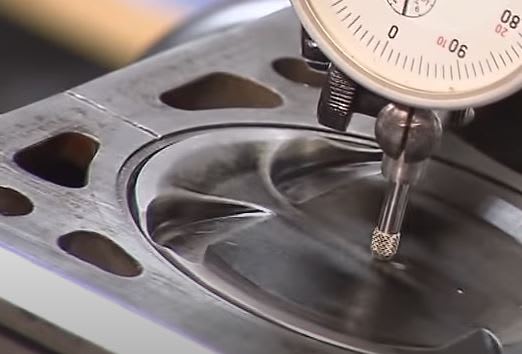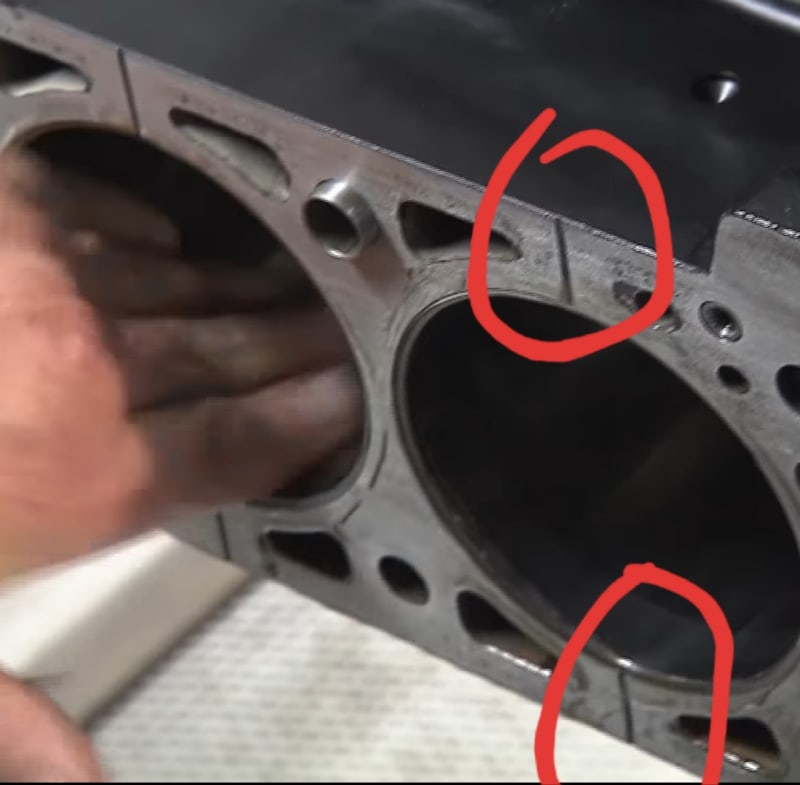Navigation
Install the app
How to install the app on iOS
Follow along with the video below to see how to install our site as a web app on your home screen.
Note: This feature may not be available in some browsers.
More options
Style variation
-
Congratulations cowski on being selected by the Eng-Tips community for having the most helpful posts in the forums last week. Way to Go!
You are using an out of date browser. It may not display this or other websites correctly.
You should upgrade or use an alternative browser.
You should upgrade or use an alternative browser.
F1 engine, deck ridges ? 4
- Thread starter Rat5
- Start date
- Status
- Not open for further replies.
EdStainless
Materials
Are they ridges or grooves?
You notice that they don't go through the sleeve.
I wonder what the head surface looks like?
= = = = = = = = = = = = = = = = = = = =
P.E. Metallurgy, consulting work welcomed
You notice that they don't go through the sleeve.
I wonder what the head surface looks like?
= = = = = = = = = = = = = = = = = = = =
P.E. Metallurgy, consulting work welcomed
-
1
- #3
Head gasket failure at high boost was not uncommon. The bore-seal was to the top of the sleeve as noted by EdStainless. The grooves were intended to allow a failure to progress towards the exterior rather than the water jacket, allowing the engine to continue on three cylinders.
je suis charlie
je suis charlie
Read my first post above.
The grooves do not connect any regions that need to be isolated. If a bore seal fails, the groove becomes active. There would also be a "weak" zone circling the bore seal to direct the combustion gases from the leakage point, around to the nearest groove.
je suis charlie
The grooves do not connect any regions that need to be isolated. If a bore seal fails, the groove becomes active. There would also be a "weak" zone circling the bore seal to direct the combustion gases from the leakage point, around to the nearest groove.
je suis charlie
TugboatEng
Marine/Ocean
I don't think you understand how a head gasket works. A head gasket consists of a multitude of seals combined together in one composite. The combustion chamber seal is a small metal ring a 1/16th inch or less in most cases. There are seals around the water and oil ports. The rest of the gasket is superfluous.
I'm sorry to use a video but this is the best I can find to show the composite nature of a head gasket:
On a side note, they didn't use shims at the factory to hold things in place so of you need them, you're doing something wrong. This is on reference to installing the perimeter seal in the video.
I'm sorry to use a video but this is the best I can find to show the composite nature of a head gasket:
On a side note, they didn't use shims at the factory to hold things in place so of you need them, you're doing something wrong. This is on reference to installing the perimeter seal in the video.
I can't say I know anything about diesels using plastic and rubber for a dry deck engine. For a gas engine using sold copper rings shims are common. The shims are used to ensure the copper rings are evenly compressed. If the head isn't set on the deck evenly the rings can get distorted and fail. With rubber and plastic and the inherent elastic plasticity, yes it doesn't seem to be as critical of an issue.
I said dry deck engine. There is no flat sheet. You sure you know about gaskets? Did you watch TugBoats video?
Here's a Boss 429 head gasket:
Granted, some offer sheets they call dry deck but they're not. The "sheet" defeats the purpose. But I agree with your unconvinced. I don't think you'll find a single explanation on the internet but start with the Cosworth Casting Process and casting thermal movement. The slots come in to contact with only one thing, the sleeve flange. There might be a reason for that but not worth arguing over.
Here's a Boss 429 head gasket:
Granted, some offer sheets they call dry deck but they're not. The "sheet" defeats the purpose. But I agree with your unconvinced. I don't think you'll find a single explanation on the internet but start with the Cosworth Casting Process and casting thermal movement. The slots come in to contact with only one thing, the sleeve flange. There might be a reason for that but not worth arguing over.
Wet sleeves ?
I vote the grooves serve as weep holes so a (wet) sleeve that develops a leak on the OD won't be very likely to discharge coolant into the sump/oil system, and allow the engine to run a good bit longer instead of failing spectacularly and unexpectedly.
Just like the weep hole on a typical water pump.
I vote the grooves serve as weep holes so a (wet) sleeve that develops a leak on the OD won't be very likely to discharge coolant into the sump/oil system, and allow the engine to run a good bit longer instead of failing spectacularly and unexpectedly.
Just like the weep hole on a typical water pump.
Not sure why we're arguing about flat copper gaskets and dry deck blocks.. since the M12 used neither.
This is an M12 head gasket - note the conformal rings at each bore sealing location
This is an M12 head gasket - note the conformal rings at each bore sealing location
-
2
- #20
Guys, I am not expressing an opinion here - just passing on what I read 38 years ago. The grooves were milled in the block deck to relieve combustion gases away from the water jacket in the event of a bore-seal failure. Never seen the grooves until this thread but I clearly remember the description from 38 years ago.
I found the video from which the OP's image was drawn (Link) and captured the following image from 2:08 in the video. The groove clearly runs from the counterbore near the bore, to the edge of the block. (I don't believe the block is sleeved.) The counterbore would have retained a metal o-ring (rectangular section often copper) to seal the bore under the conditions of extreme pressure, temperature, temperature gradients and mechanical distortion experienced by a stock-block engine of that era pushing towards 1000 hp/litre. Pity the video doesn't show the gasket.

je suis charlie
I found the video from which the OP's image was drawn (Link) and captured the following image from 2:08 in the video. The groove clearly runs from the counterbore near the bore, to the edge of the block. (I don't believe the block is sleeved.) The counterbore would have retained a metal o-ring (rectangular section often copper) to seal the bore under the conditions of extreme pressure, temperature, temperature gradients and mechanical distortion experienced by a stock-block engine of that era pushing towards 1000 hp/litre. Pity the video doesn't show the gasket.

je suis charlie
- Status
- Not open for further replies.
Similar threads
- Replies
- 6
- Views
- 4K
- Replies
- 5
- Views
- 785
- Replies
- 27
- Views
- 13K
- Replies
- 19
- Views
- 10K
- Replies
- 5
- Views
- 2K

